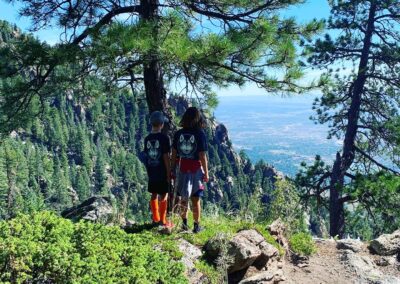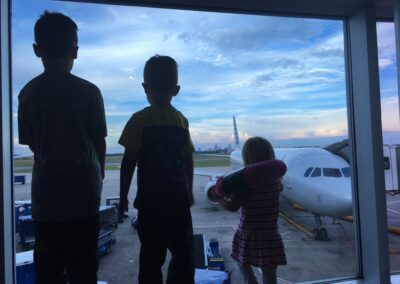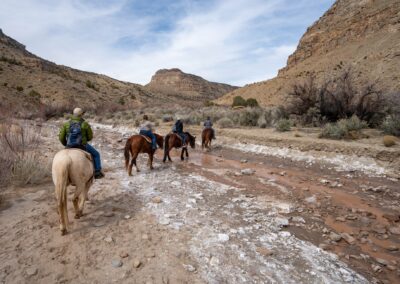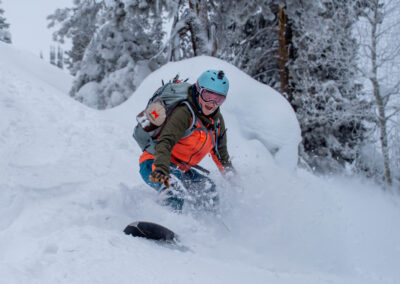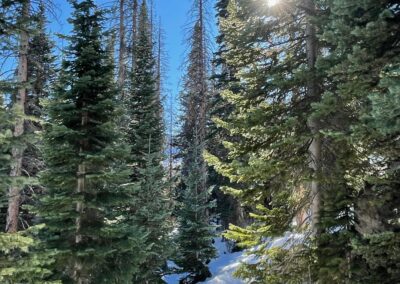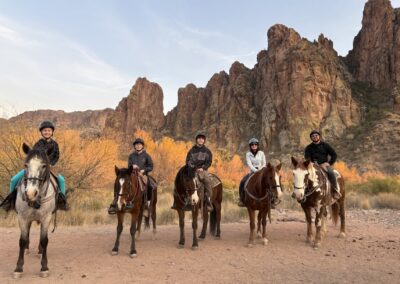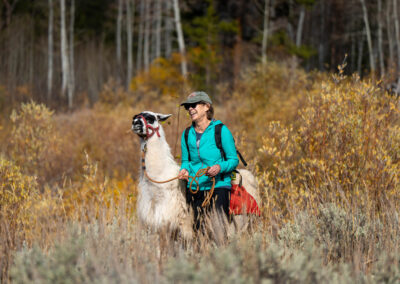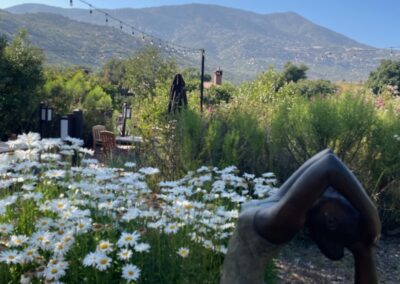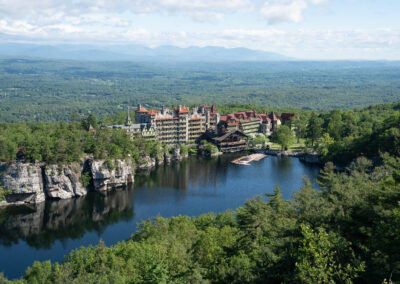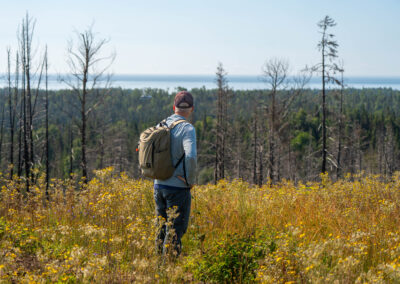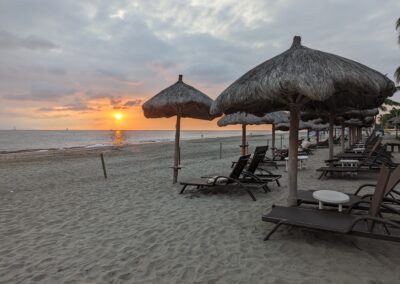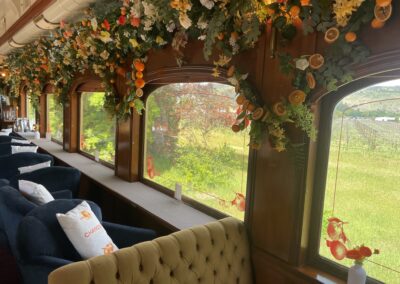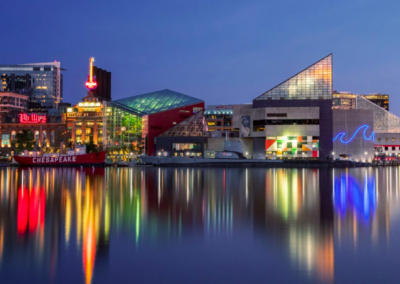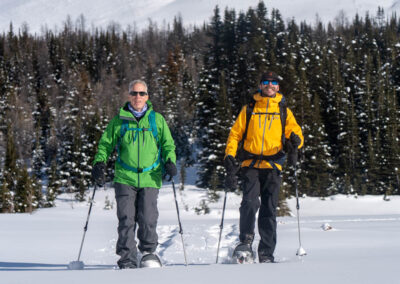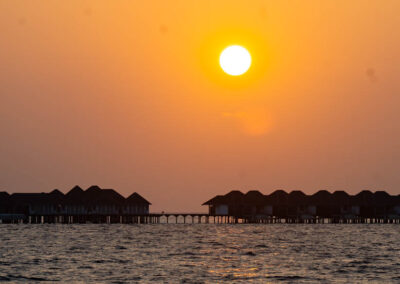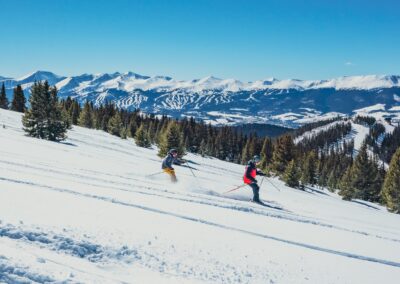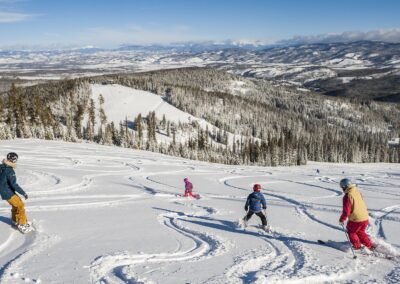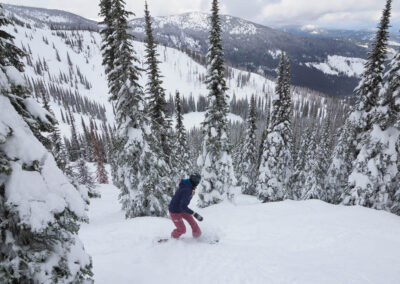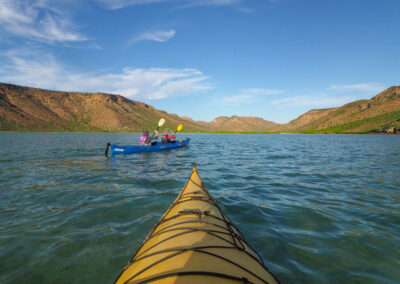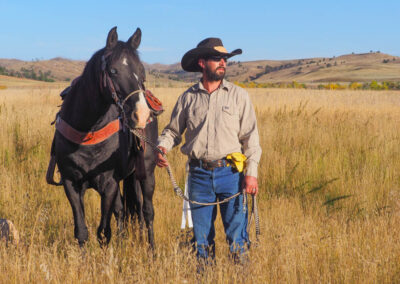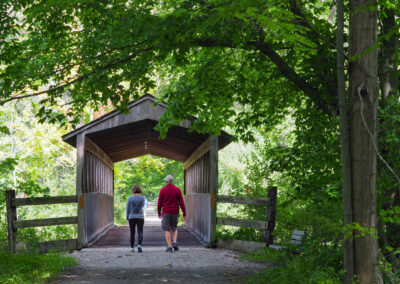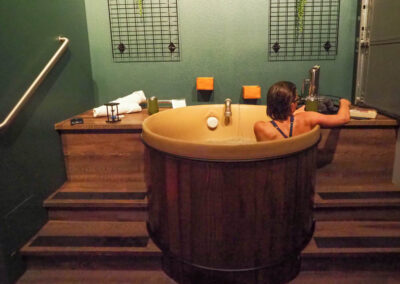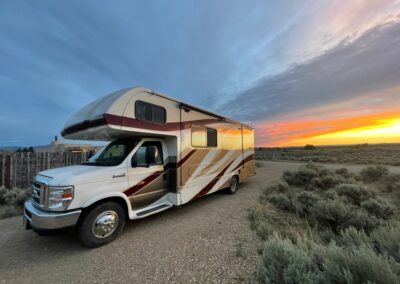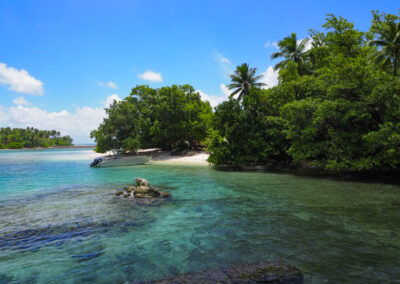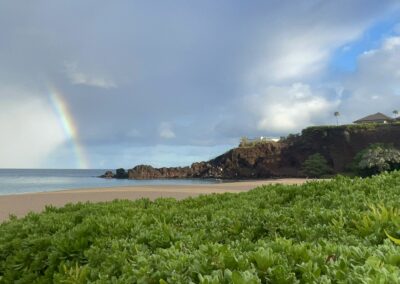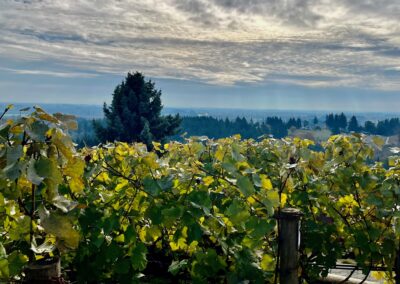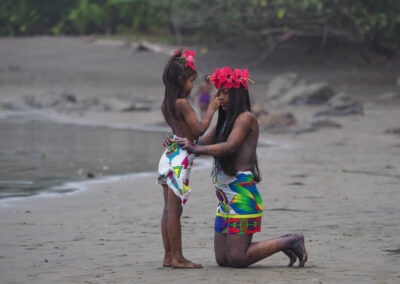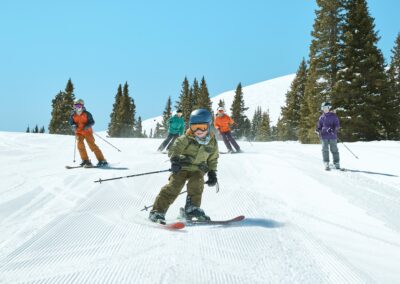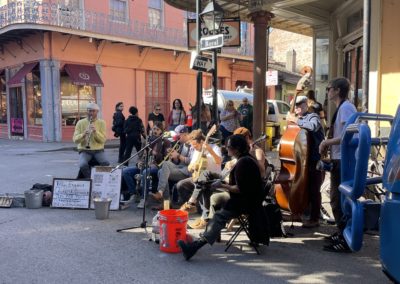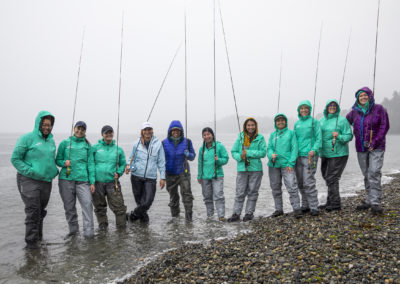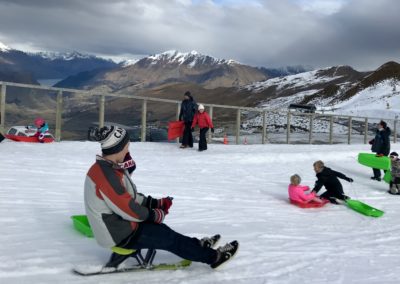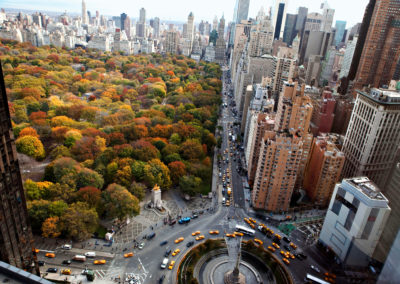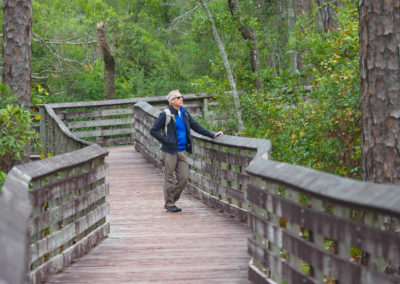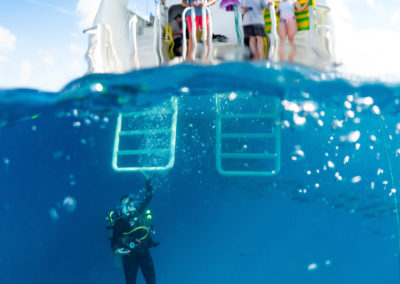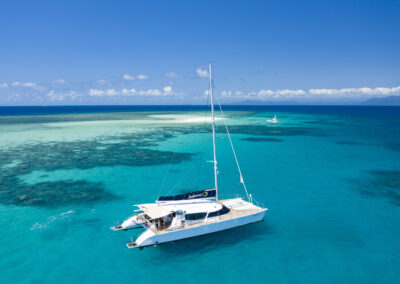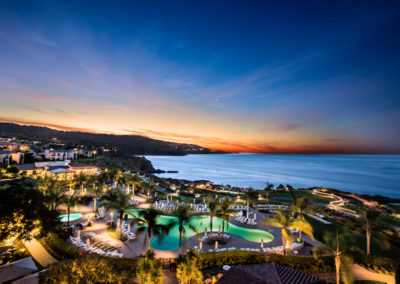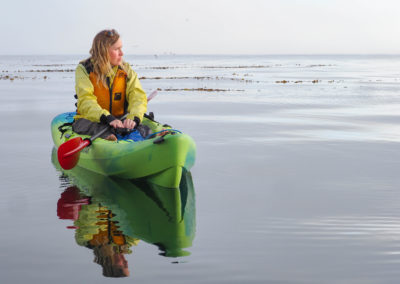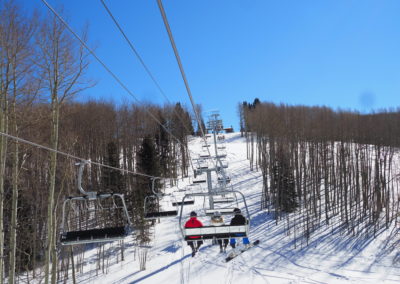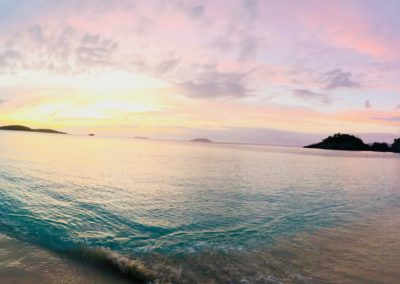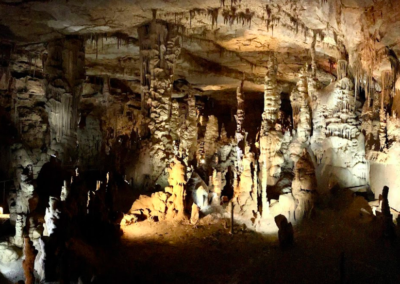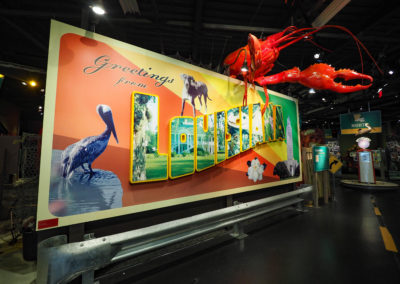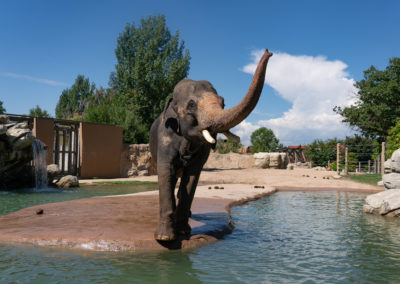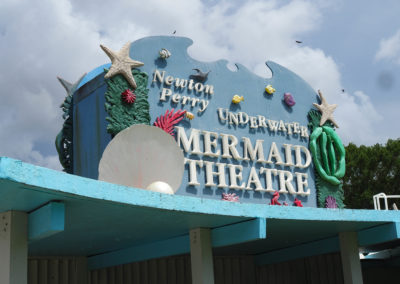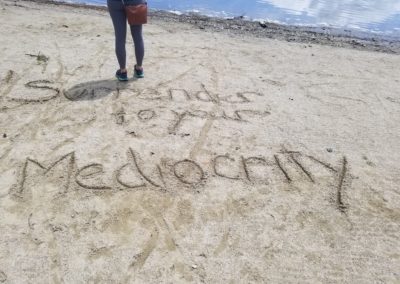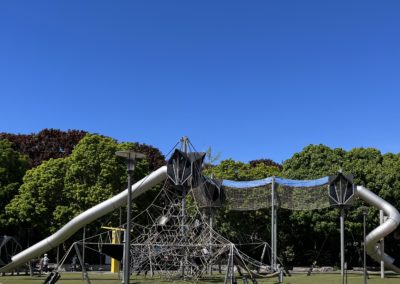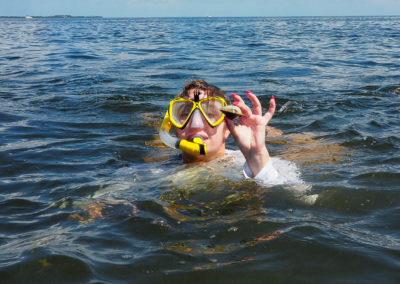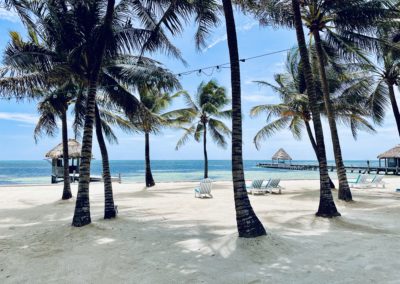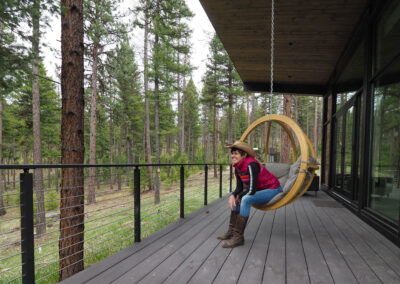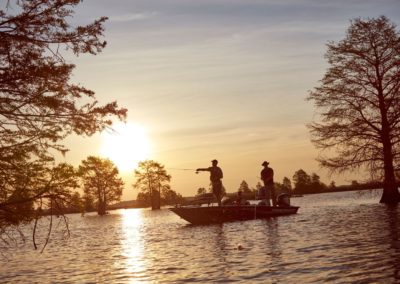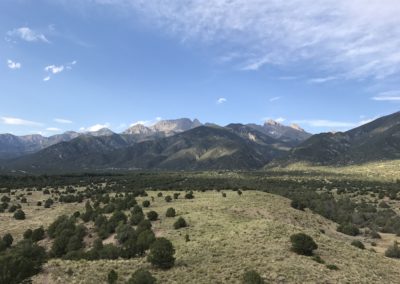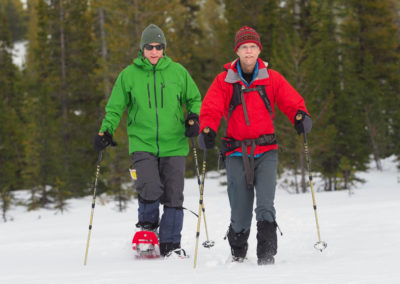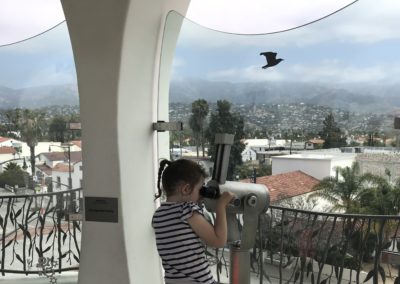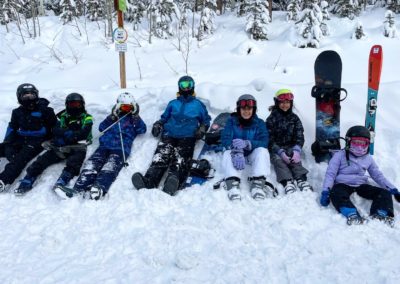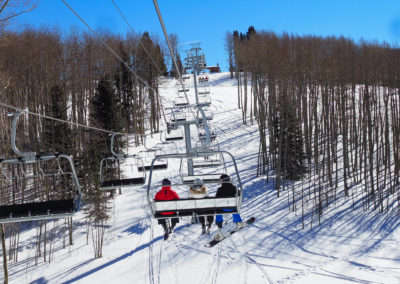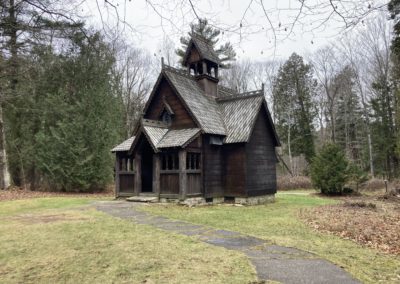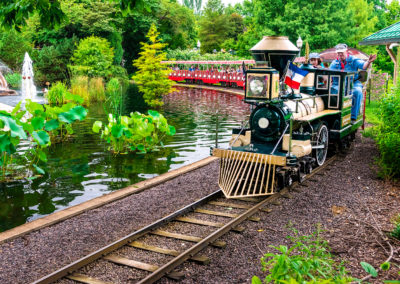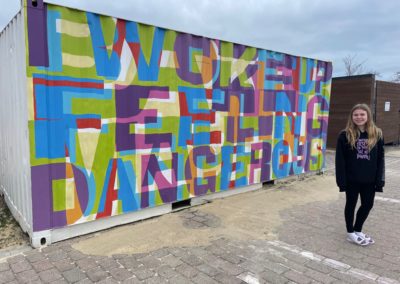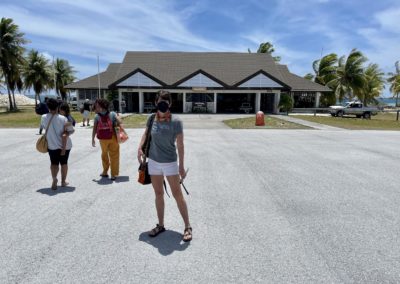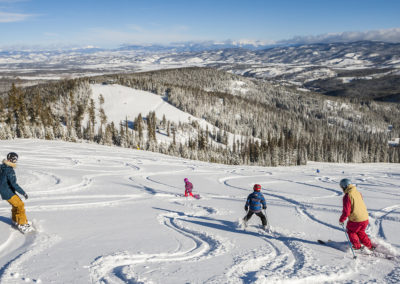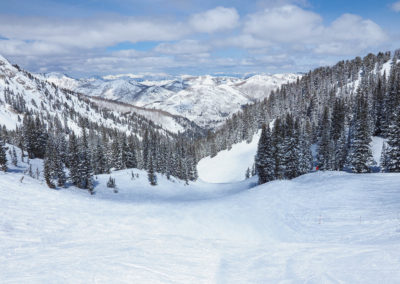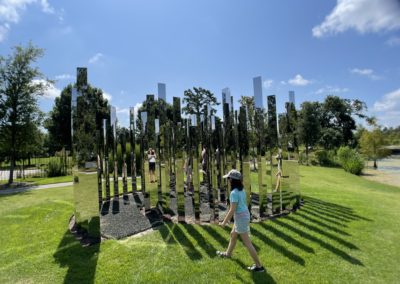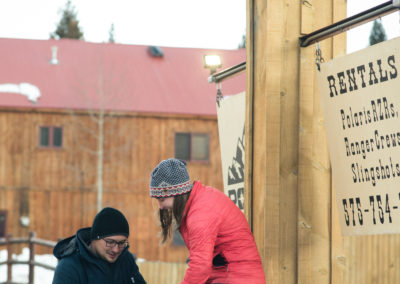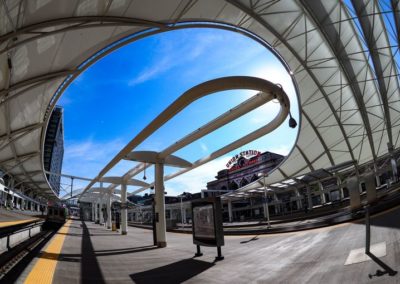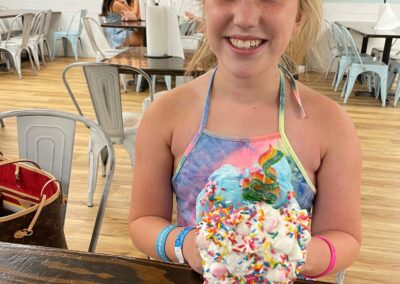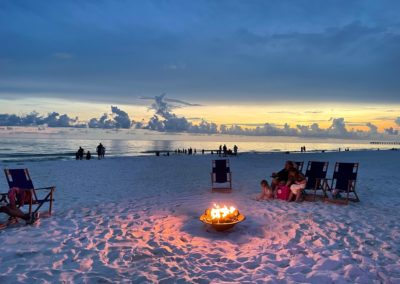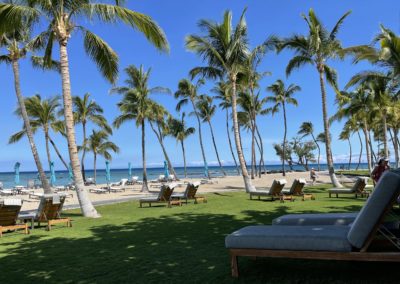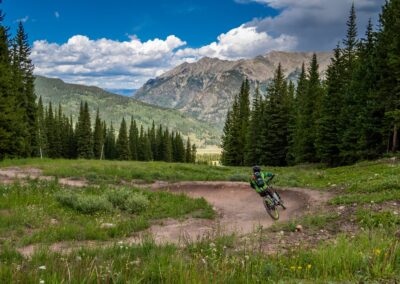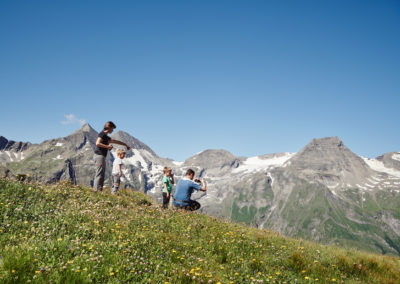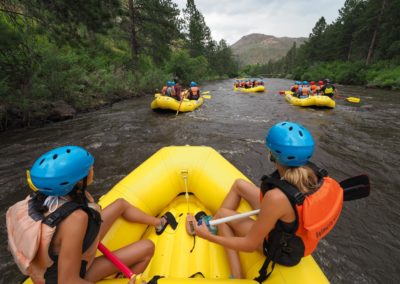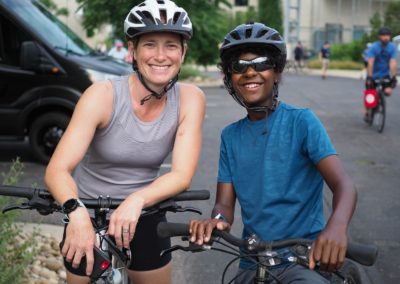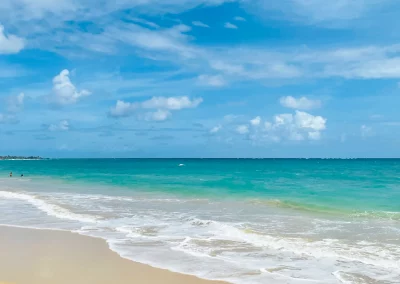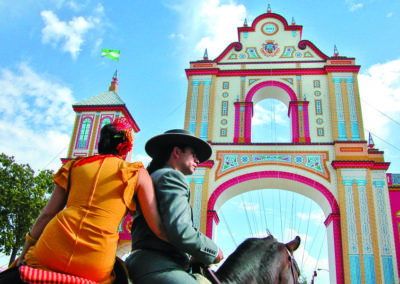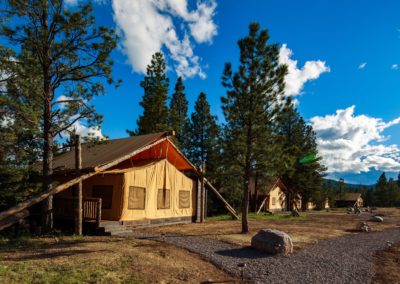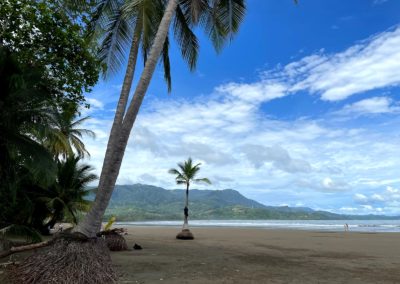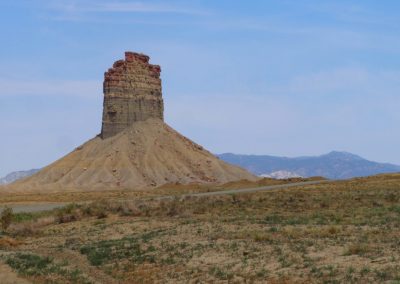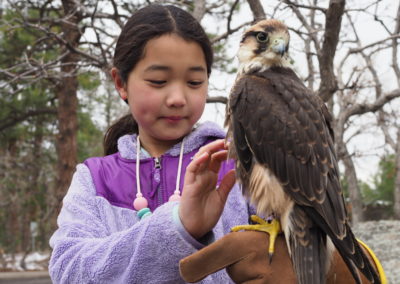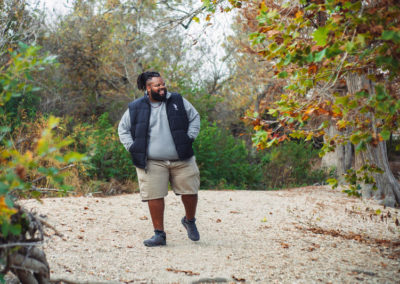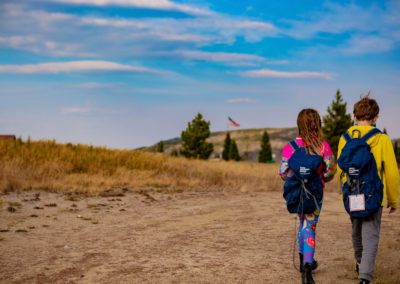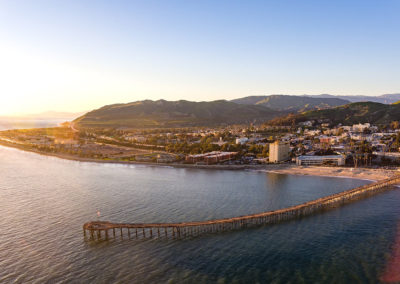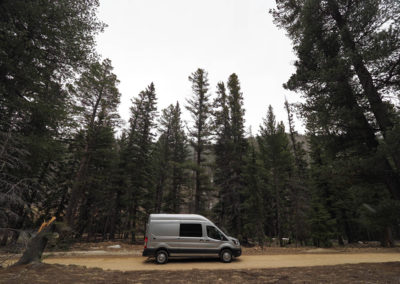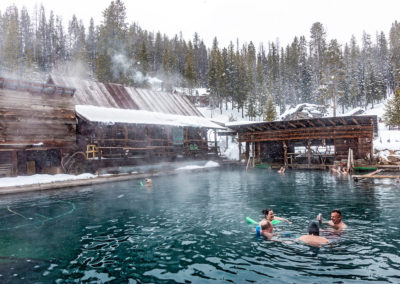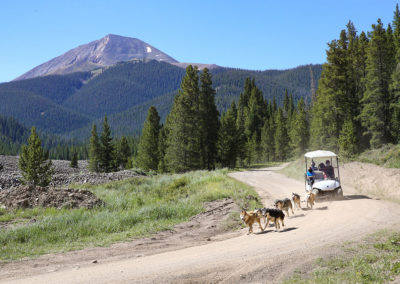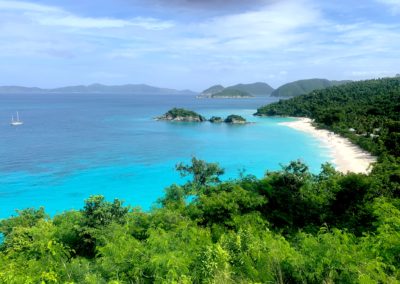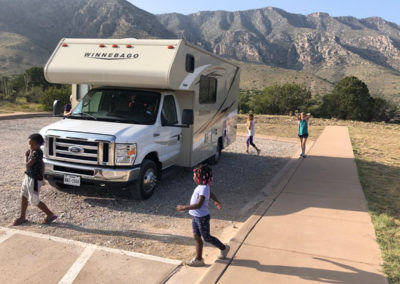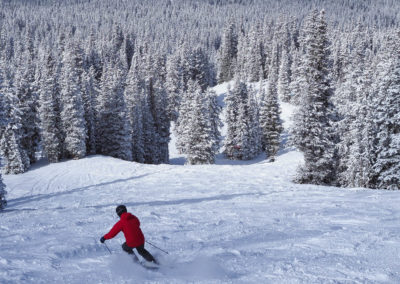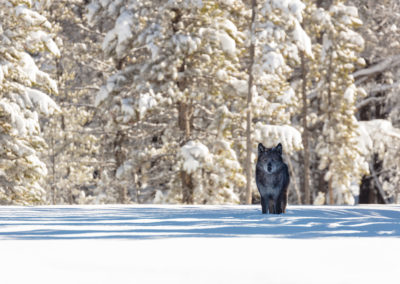We all know what they say about red skies in the morning (sailors take warning), but what kind of maritime significance might a rainbow possess? I pondered this as I looked out across Seattle’s Shilshole Bay, where a brilliant spectrum had spread over the marina just after sunrise. Having just arrived with a group of other women in search of salmon in the Puget Sound, I took it as a sign of fish in our future.
Until this summer, the extent of my fishing experience fell on a few unsuccessful rod and reel attempts scattered across state lines through the years. And, while I love being on and in the water (and eating seafood), sitting still isn’t exactly my forte, so it was never a hobby I actively pursued. But when the Recreational Boating & Fishing Foundation (RBFF) invited me to come fishing with them in Seattle, I jumped at the chance to learn more.
After a decline in fishing and boating in 1998, the RBFF was created as a response to the Sport Fishing and Boating Safety Act passed by Congress, which required the Secretary of the U.S. Department of the Interior to implement a national outreach plan to encourage sport fishing, boating and aquatic resource stewardship. They launched campaigns called Take Me Fishing and Vamos a Pescar to make fishing more accessible to all, while increasing awareness of the sport as a means to protect, conserve and restore aquatic natural resources. (In fact, 100 percent of fishing license sales goes back into conservation efforts!)
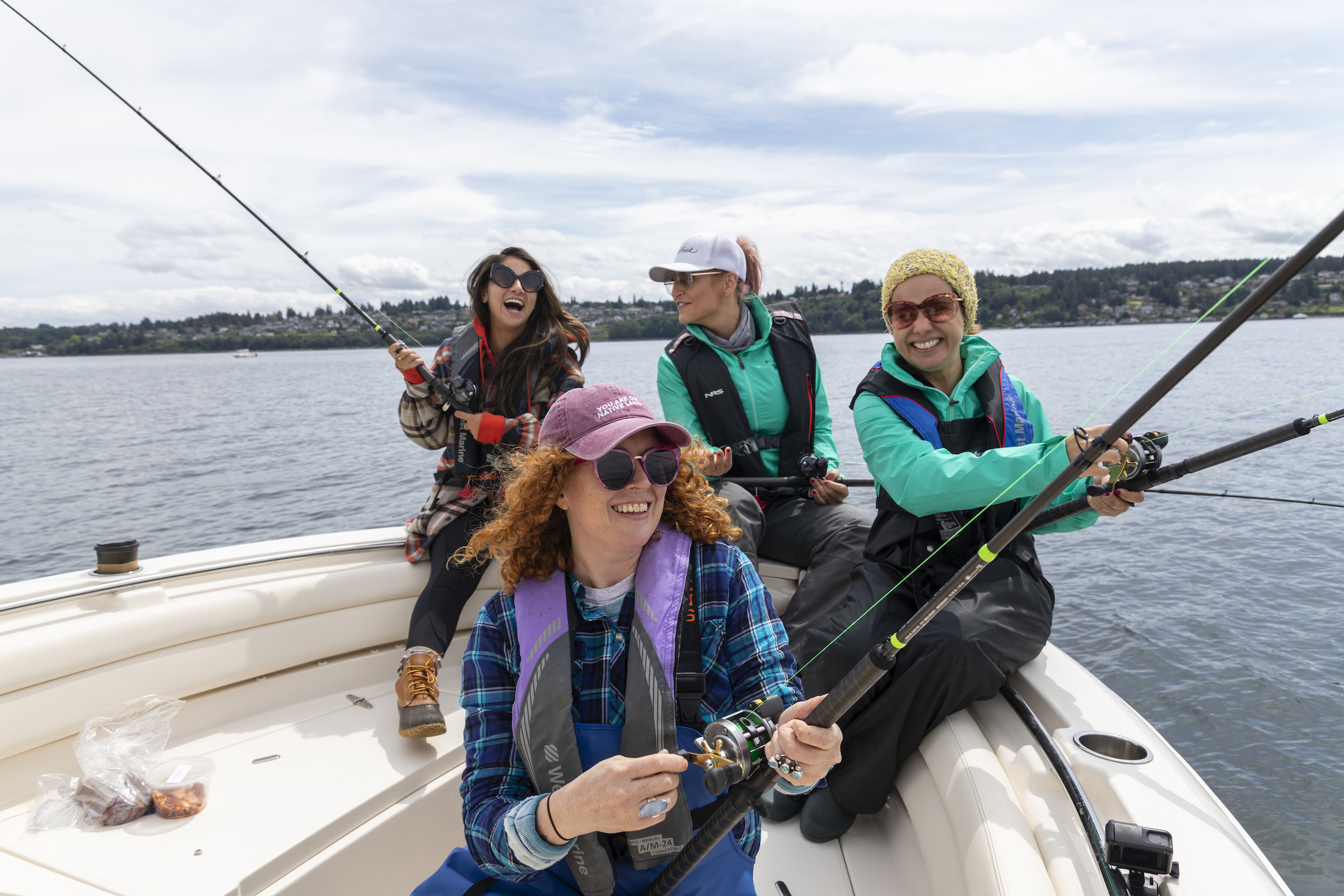
Women in search of salmon in the Puget Sound. Credit Tegra Stone Nuess Photography
In 2018, the non-profit launched Women Making Waves, a program specifically aimed at empowering girls and women to fish, and further supporting diversity and inclusion in the fishing community. RBFF provides all the info you need to get started, from obtaining a fishing license and selecting gear to tying fishing knots. And their efforts seem to be working because, after 19.4 million women went fishing in 2021, female anglers are currently at an all-time high.
“There’s a lot of women learning about both fly fishing and traditional spin, and the sport seems to be growing more and more each year,” says Angelica Talan, who got into fishing four years ago when her daughter wanted to learn. Now the digital creator travels around the country fishing and sharing her experiences for brands like Redington Gear and groups like United Women on the Fly.
“As for women of color, we seem to have a little bit of a hurdle to jump,” Talan adds. “As fishing resorts, guides, brands and retailers aren’t really marketing to (us)… however, I hope to see a change in that as time goes on. I think Take Me Fishing and RBFF are making strides in their mission to help new anglers of all backgrounds get on the water and learn to fish.”
On that crisp Seattle morning, I was part of a diverse group of women from all over the country with varying levels of fishing experience. Some had never fished at all. Others, like Ashley Lewis, grew up fishing the Salish Sea in canoes made by her Quinault ancestors. Now she’s a California-based fishing guide and outdoor educator who inspires aspiring anglers through informative videos on her YouTube channel.
“I cherish my time fishing alongside other women because we tend to see the experience holistically,” says Lewis, as we boarded a sleek center console boat. “We aren’t fishing together just to catch a fish, but to enjoy an adventure together, learn from each other and create community where the water is open for us.”
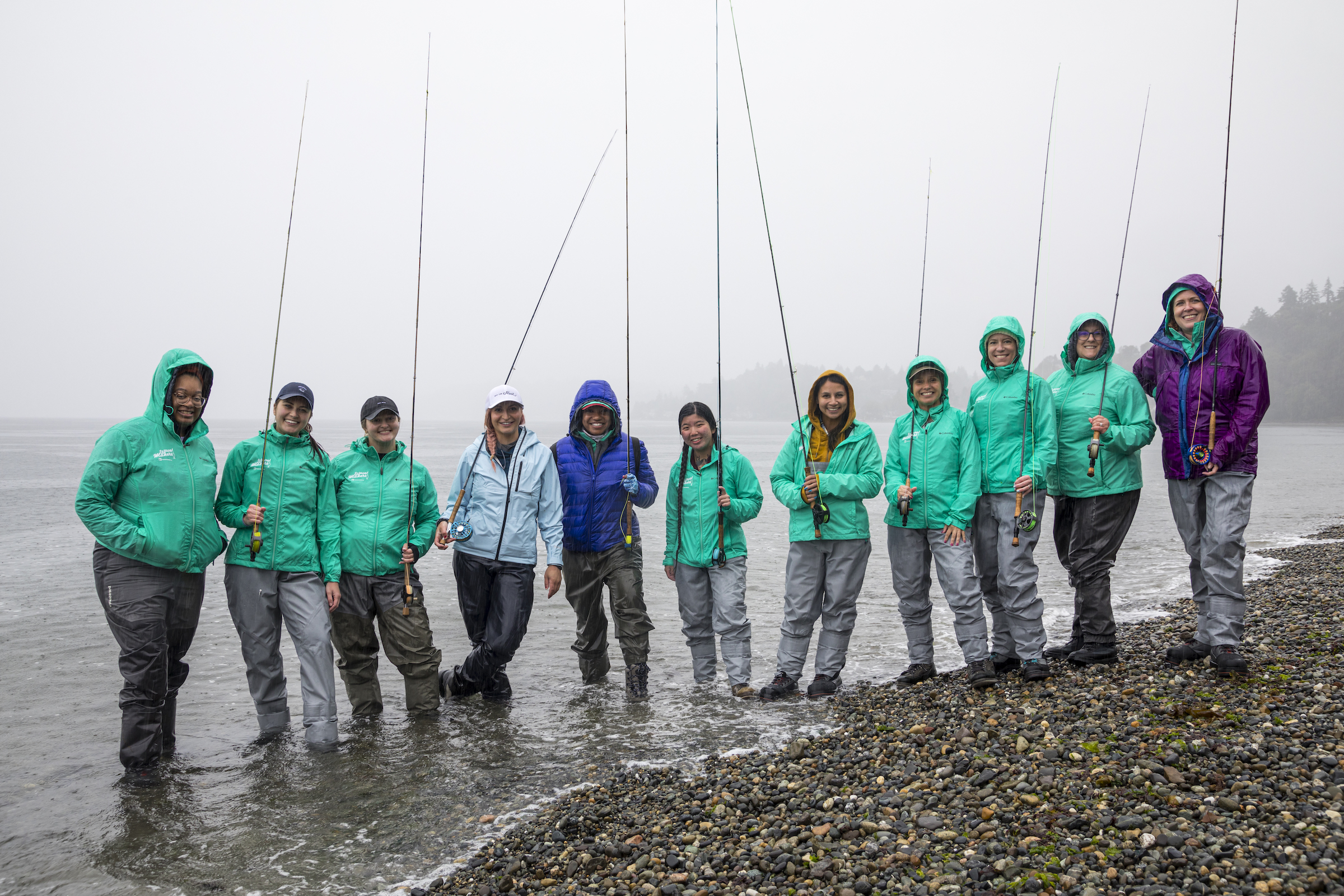
Writer Veronica Meewes joins other women for a fishing adventure. Credit Tegra Stone Nuess Photography
Our captain, Justin Wong of Cut Plug Charter, also grew up fishing these waters. As we set out into the Puget Sound toward Tacoma, Wong gave us a tutorial on using levelwind reels to lower our herring bait into the water at the exact depth he’d call out using his fish finder navigation device.
“It’s about knowing where to go and when,” Wong explained. “Everything on the Puget Sound is based on the tides. These bait fish will stack up on different ledges at certain parts of different tides, and theoretically that creates the ambush spot for the salmon. So, when you can find concentrations of herring, that’s where the salmon are feeding.”
We reached Gibson Point, on the southern end of Fox Island, and our group fell silent as we focused on dropping and retrieving our line. I applied a light pressure with my thumb on the reel in order to let the line down in a slow and controlled fashion as 150-, 175- and 200-feet scrolled by on the reel counter. Our collective concentration was interrupted when one of our boatmates caught something –– a big something. We all gathered around her in vicarious excitement, shouting our encouragements as she reeled in… a dogfish. Back into the water it went, but the energy she had stirred up was palpable.
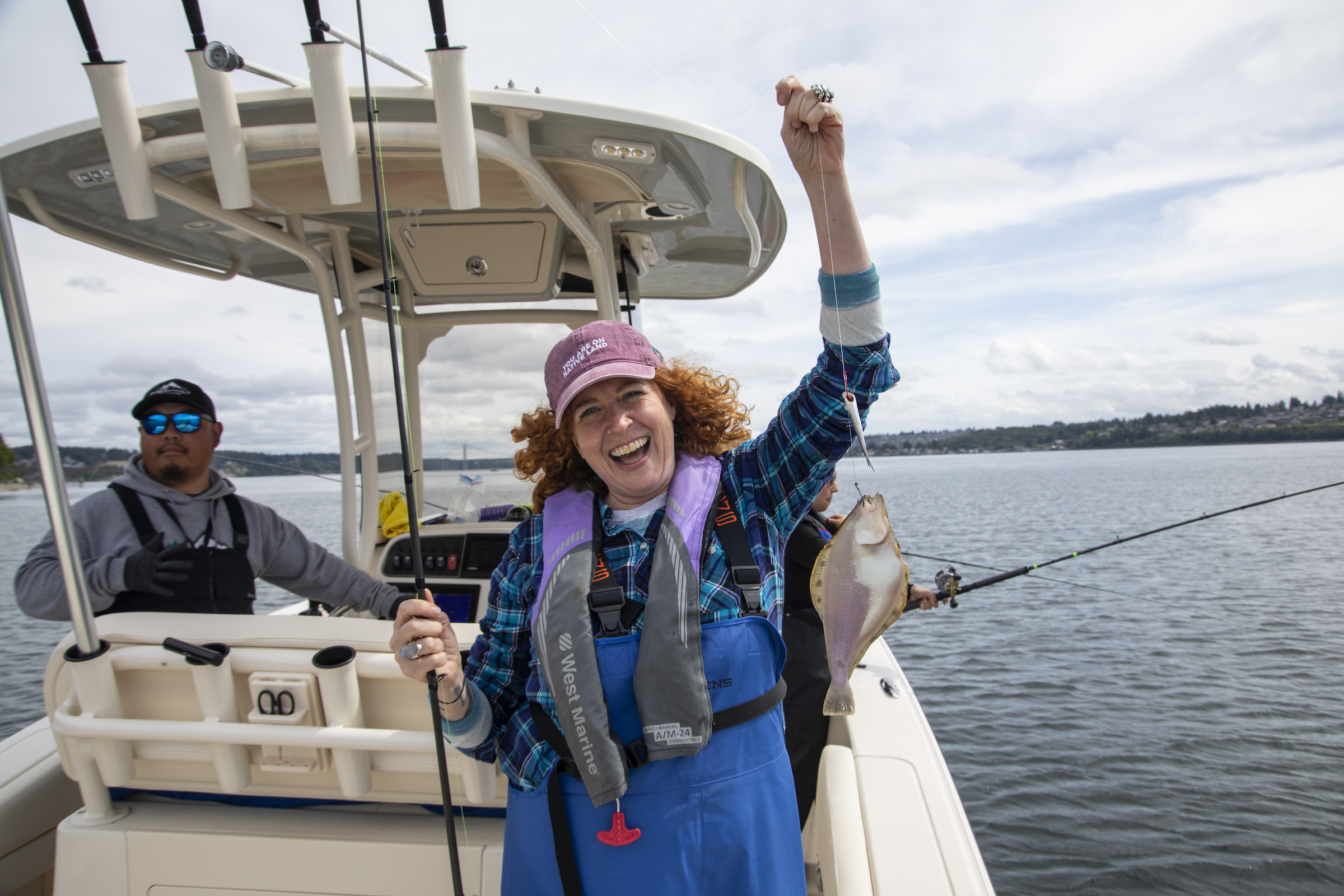
Veronica Meewes experiences the thrill of reeling in her first fish. Credit Tegra Stone Nuess Photography
Not long after that, I caught my very first fish. (Also not a salmon, but also incredibly exciting!) I’ll never forget the surge of adrenaline I experienced as I felt a tug and reeled in that flipping flounder. And when someone in our group finally did score a salmon, it felt like a victory for all of us. On the boat ride back to the marina, my fishing companions snacked on candied salmon and swapped life stories. We spotted a porpoise, the clouds parted to reveal the Olympic Mountains, and another rainbow appeared.
I was definitely hooked on fishing –– pun totally and appropriately intended. But I also knew I’d enjoyed a very luxurious experience. We never had to bait our hooks or release our fish: Captain Justin handled that for all of us. I didn’t need any sort of knowledge about where we were going or why: his fish finder dictated that, too. Not to mention, chartering a captained boat will set you back a good chunk of change, so deep sea fishing didn’t exactly feel particularly accessible. I was very excited to try my hand at fly fishing the next day and see how the two compared.
From Reel to Fly
The next day was also the start of an “atmospheric river” that had moved over Seattle, so the weather was less than ideal for fishing. Nevertheless, we persisted. (A little rain isn’t going to stop anyone from living life in the Pacific Northwest.)
RELATED: Three days in Monterey: Capturing California’s Coastal Charms
After gearing up in waders, wading boots, and all of the waterproof and resistant layers I had with me, we trekked into Lincoln Park –– 135 acres hugging the Puget Sound in West Seattle. (I learned that there’s more surface area around the coast of the Puget Sound than there is along the entire West Coast, making for plenty of fishing opportunities all over the Seattle area.)
We met up with Dave McCoy and his team at Emerald Water Anglers, starting off with an introduction to the basics of fly fishing on land, with raindrops trickling down around us. McCoy instructed us to hold the pole like we were shaking hands with it, ensuring the handle stays flush against the forearm.
“The joint we want to use is our elbow,” he described. “So, pretend you have a sliced orange in the crook of your elbow and you’re squeezing juice out of it to make a cast.”
We learned how to pick up and lay down the line, moving in a fluid clocklike motion with pauses at 10 o’clock and 2 o’clock to allow the end of the line to pass the tip of the rod. Our lines made whispering whistles as they cut through the air, and I heard someone comment, “It’s like ribbon dancer!” (I had to giggle because I was definitely fighting off the urge to twirl figure eights in the air with my thus-flyless line.)
Soon though, we headed toward the water for some real practice — flies and all. But first, I had to adjust to the very strange (but oddly pleasant) feeling of walking into water wearing wading boots, feeling the currents lap against them while my toes remained dry and toasty inside.
“What we’re trying to accomplish when we’re out here is to become the ultimate puppet masters for our fly,” explained guide Kristen Bufe. “Trout are creatures of habit, and they are built based on what their environment gives them. If they see something moving in the water, they want to chase it and eat it. So, it’s our job to get it moving.”
Now equipped with the necessary tools and knowledge, all of my fishing companions and I got into a rhythm of casting out into the Puget Sound, watching our lines unroll onto the water’s surface before dancing our lures back to shore, mimicking the movements of a fly.
If it sounds poetic, let me give a little more behind-the-scenes insight: this experience also entailed hooking the back of my jacket while trying to cast and tangling up my own line while trying to remove seaweed from it (time and time again), all while the rain started coming down more steadily.
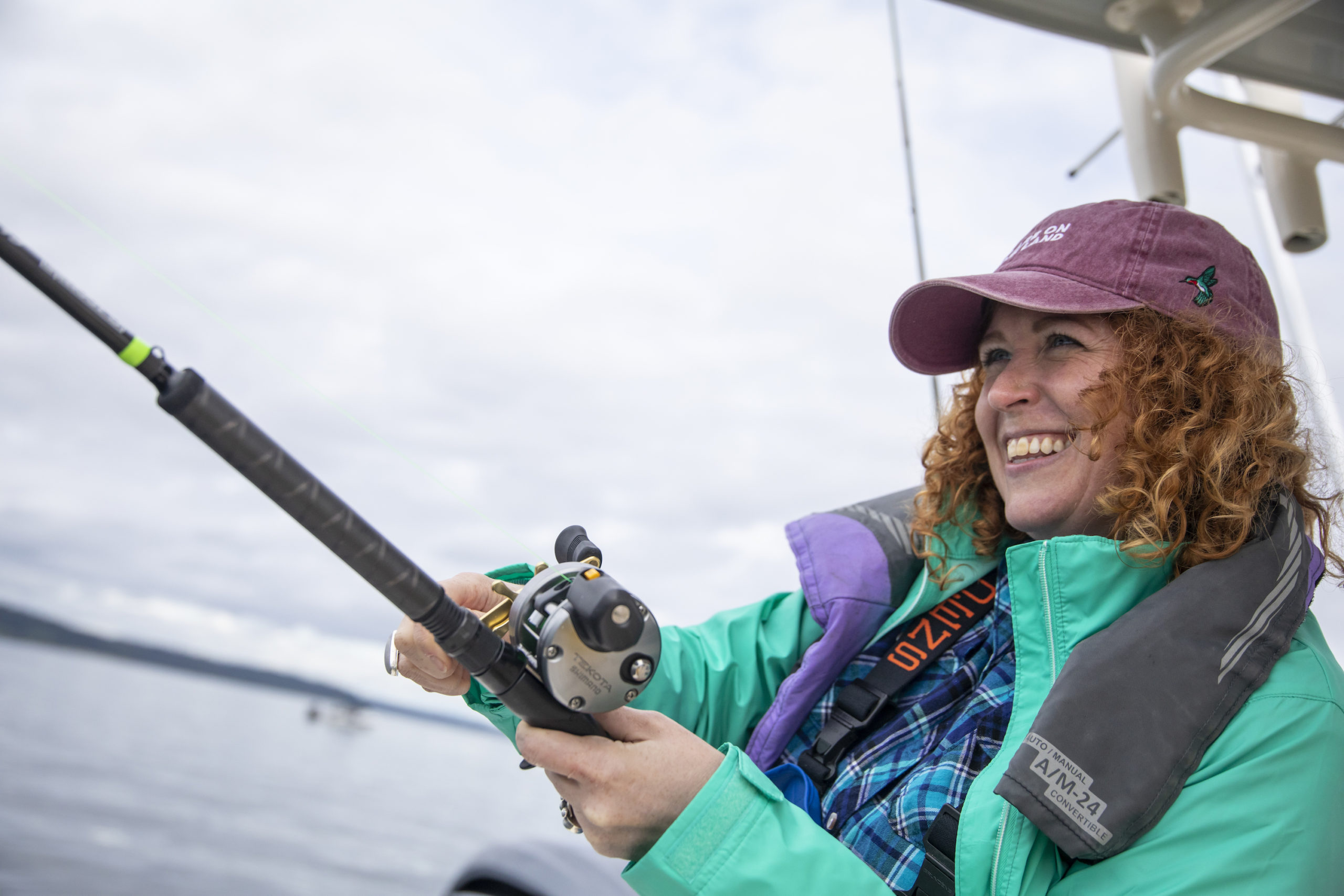
Women Making Waves is a program specifically aimed at empowering girls and women to fish, and further supporting diversity and inclusion in the fishing community. Credit Tegra Stone Nuess Photography
And yet, I enjoyed myself. A lot, actually. I found there to be so much more strategy and technique to fly fishing — just enough to keep my ADD-functioning brain occupied. As a diehard crafter, I was also intrigued by the spectrum of sparkly lures, and the idea of tying my own flies (which a lot of anglers do). It certainly didn’t seem like the easiest way to catch a fish (no fish finders here). But I liked that about it.
As we retreated for lunch and shelter from the rain, McCoy marveled at the ability of cutthroat trout to adapt between fresh and salt water.
“It’s just incredible,” he said. “At the rate human beings are going, they’re definitely going to outlive us.”
Teach a Woman to Fish
That evening at dinner, my new fishing buddies and I shared our experiences. I knew if I’d enjoyed fly fishing in the cold rain, while bundled up in layers, I’d really love it under more ideal conditions. However, thinking about gathering all the gear we’d been able to borrow earlier that day seemed like quite an investment for further exploration. Fly fishing seemed more accessible than chartering a deep-sea fishing boat, but still not quite there.
RELATED: Treasuring Time in the Pacific Northwest’s Olympic National Park
That is, until Stephanie Vatalaro, Senior Vice President of Marketing and Communications for RBFF, let me know that most state parks offer free fishing programs, and they’ll even lend you gear to use. (RBFF and Take Me Fishing also has First Catch Centers in certain areas, fitted with everything a beginner needs to get started.)
As soon as I returned to Texas, an internet search quickly came up with a “Fish with a Ranger” event in Johnson City. This program, which provides all the necessary fishing gear and a ranger for guidance, had just recently launched at Pedernales Falls State Park, located just under 50 miles west of Austin.
I met ranger Stephen Garmon and a couple other hopeful anglers just south of Trammel Crossing, where cypress trees lined the vibrant green Pedernales River, which was visibly low after a summer of drought.
“The breeding space for certain aquatic insects and fish is very small so their normal food supply is lower than usual,” Garmon explained. “The plant life is also less forthcoming with food, just not growing as it should be.”
These conditions, he said, meant we had a higher likelihood of catching bluegill perch, Rio Grande cichlids and Guadalupe bass. They had fly fishing rods, rod-and-reel, and pushbutton rods for borrowing, plus binders of information like step-by-step instructions for tying fishing knots, and both live bait and a case of flies. I picked his brain on the wide variety of options for flies.
“During the year, different insects go through different stages, so if you know what insects are currently thriving, the fish know them too and they’ll go after them,” he explained. “Mayflies, caterpillars, flies, bees –– I’ve seen some that look like crawdads. You can even buy a kit that has their entire life cycle in different lures, with all different sizes and shapes, different length wings and legs for whatever week you happen to be fishing. You can get really into it, especially when there are some really picky fish out there.”
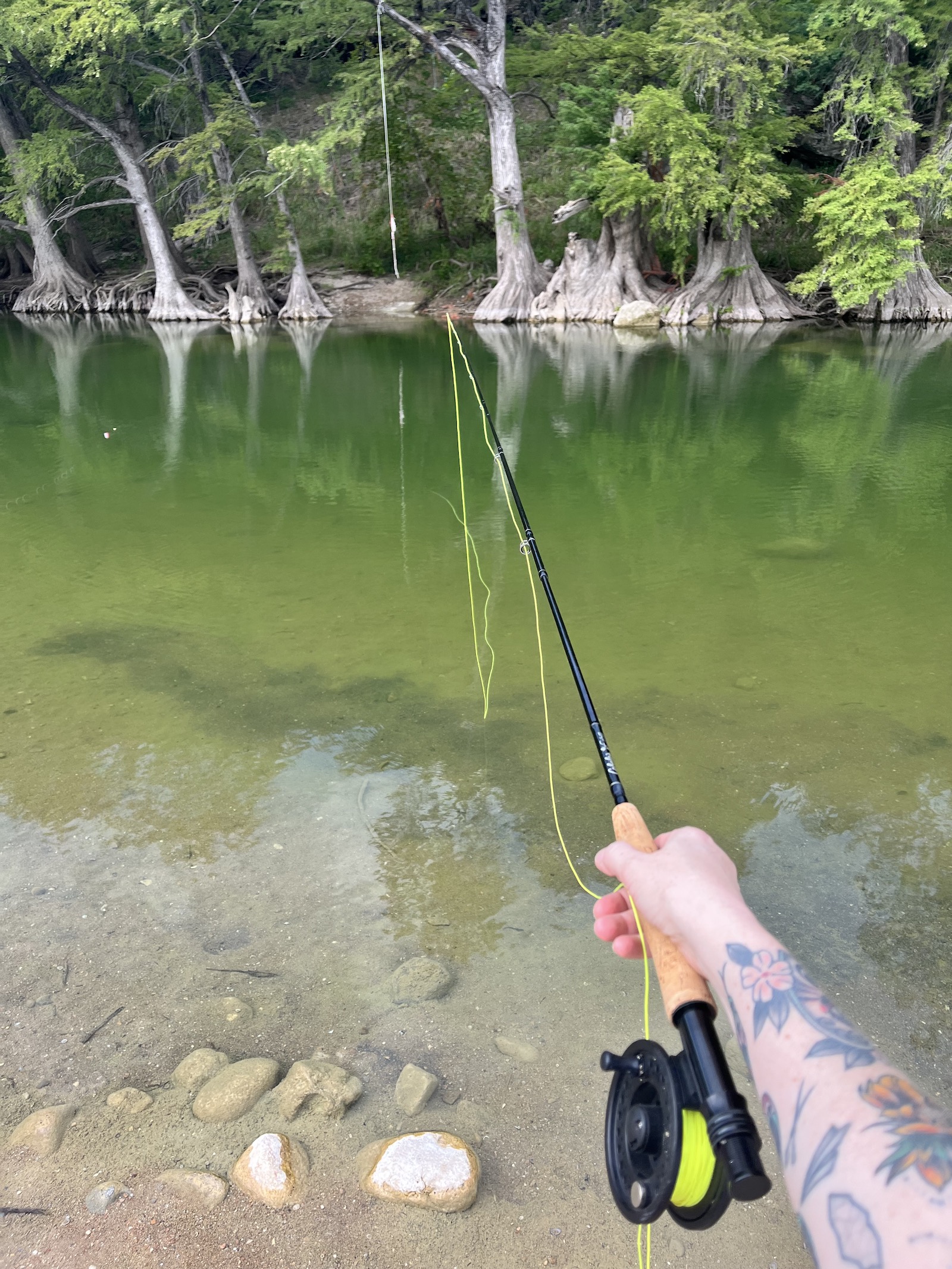
Trying out the “Fish with a Ranger” program at Pedernales Falls State Park. Credit Veronica Meewes
I chose a little white woolly bugger, which is said to be versatile for catching both bass and trout. After a little refresher on land, I got right to casting into the water. It was undeniably peaceful out there along the water, and I found it quite meditative to cast my line, listening for that familiar whistling sound as it cut through the air.
I came across another lady fishing by herself. Fifame said her three kids are “city girls,” taking after her husband, who was watching them for the day so she could have her solo time in nature. This was just her second time fishing with a rod and reel, but she was intrigued by the technique of fly fishing.
“I’ve been watching you and that looks interesting,” she said. “I guess I know what I’m trying next time I come.”
A license isn’t needed to fish within a state park, making it even more convenient for beginners to get on the water. While this was billed as a catch and release event, Garmon let me know anyone could take their fish home too, as long as it was within the legal size limit. Texas Park & Wildlife’s Outdoor Annual (available as a book or as an app) summarizes the year’s fishing regulations and also lets you easily search for waterbodies and places to purchase a license.
“You can download it for free and it’s got all the updated size and catch limits for fish –– how big it has to be and how many you can keep per day,” Garmon said. “That way we can regulate the population better.”
I may have left Pedernales Falls without a fish that day, but I thoroughly enjoyed my day taking in the sights and sounds of nature and hiking throughout the park. I also made a new friend and gathered plenty of useful information for future fishing trips. And with over 6,700 lakes, 377 miles of coastline and 36 rivers to choose from in Texas, I know the next trip is just around the corner.
If You Go

Getting there:
From Austin, book a flight on Delta or Alaska Airlines for non-stop service to Seattle.

Stay:
I stayed in a modern, smartly appointed room at the very centrally located Sound Hotel in Belltown. Another great option is the Ace Hotel Seattle for its intentional design and minimalist-chic rooms.
Do:
Pike Place Market is one of those spots that’s a tourist destination for a reason. But skip the line at the original Starbuck’s and instead grab a pastry at Three Girls Bakery and an espresso at Ghost Alley on your way to the famous gum wall. And the Pike Place Fish Market guys might be most well-known for tossing their fish, but I’d rather spend my time across the street, enjoying a crab cub at Jack’s Fish Spot. Go salmon fishing in the Puget Sound with Cut Plug Charters or book a guided fly fishing experience with Emerald Water Anglers. If the weather cooperates, head to Discovery Park to hike its trails and stroll its beaches with a beautiful view of the sound. Just before sunset, head to Kerry Park for one of the most beautiful panoramic views of the Seattle skyline.
Eat & Drink:
If you’re anything like me, a day on the water will leave you craving seafood — and luckily there is no shortage of it Seattle. Taylor Shellfish is your spot for high quality, sustainable local seafood, with a focus on any type of shellfish your heart desires. Local Tide is a favorite for lunch – try the rockfish banh mi and the crab roll. The Walrus & the Carpenter in Ballard is a modern interpretation of a classic fish tavern. For some incredible West Coast comfort food, try to secure a reservation at Communion; or if you can’t, get there when it first opens and snag a seat at the bar. There’s a laundry list of amazing breweries in the area like Fair Isle Brewing, Holy Mountain Brewing and Cloudburst Brewing.

Insider Tip:
It might sound obvious, but it’s worth mentioning that you should remember to pack a waterproof jacket of some sort, and ideally water-resistant shoes. Life goes on in Seattle, rain or shine, but it’ll be a whole lot more comfortable if you’re warm and dry.








